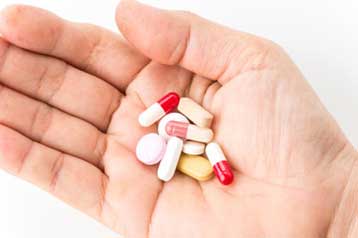Multidrug-Resistant Tuberculosis
What is tuberculosis (TB)?
Tuberculosis (TB) is a disease caused by germs that are spread from person to person through the air. TB usually affects the lungs, but it can also affect other parts of the body, such as the brain, the kidneys, or the spine. In most cases, TB is treatable and curable; however, persons with TB can die if they do not get proper treatment.
What is multidrug-resistant tuberculosis (MDR TB)?
Multidrug-resistant TB (MDR TB) is TB that is resistant to at least two of the best anti-TB drugs, isoniazid and rifampin. These drugs are considered first-line drugs and are used to treat all persons with TB disease.
What is extensively drug resistant tuberculosis (XDR TB)?
Extensively drug resistant TB (XDR TB) is a rare type of MDR TB. XDR TB is defined as TB which is resistant to isoniazid and rifampin, plus resistant to any fluoroquinolone and at least one of three injectable second-line drugs (i.e., amikacin, kanamycin, or capreomycin).
Because XDR TB is resistant to first-line and second-line drugs, patients are left with treatment options that are much less effective.
XDR TB is of special concern for persons with HIV infection or other conditions that can weaken the immune system. These persons are more likely to develop TB disease once they are infected, and also have a higher risk of death once they develop TB.
How is TB spread?
Drug-susceptible TB and MDR TB are spread the same way. TB germs are put into the air when a person with TB disease of the lungs or throat coughs, sneezes, speaks, or sings. These germs can float in the air for several hours, depending on the environment. Persons who breathe in the air containing these TB germs can become infected.
TB is not spread by
- shaking someone’s hand
- sharing food or drink
- touching bed linens or toilet seats
- sharing toothbrushes
- kissing
- smoking or sharing cigarettes
How does drug resistance happen?
Resistance to anti-TB drugs can occur when these drugs are misused or mismanaged. Examples include when patients do not complete their full course of treatment; when health-care providers prescribe the wrong treatment, the wrong dose, or length of time for taking the drugs; when the supply of drugs is not always available; or when the drugs are of poor quality.
Who is at risk for getting MDR TB?
Drug resistance is more common in people who:
- do not take their TB medicine regularly
- do not take all of their TB medicine as told by their doctor or nurse
- develop active TB disease again, after having taken TB medicine in the past
- come from areas of the world where drug-resistant TB is common
- have spent time with someone known to have drug-resistant TB disease
How can MDR TB be prevented?
The most important thing a person can do to prevent the spread of MDR TB is to take all of their medications exactly as prescribed by their health care provider. No doses should be missed and treatment should not be stopped early. Patients should tell their health care provider if they are having trouble taking the medications. If patients plan to travel, they should make sure they have enough medicine to last while away.
Health care providers can help prevent MDR TB by quickly diagnosing cases, following recommended treatment guidelines, monitoring patients’ response to treatment, and making sure therapy is completed.
Another way to prevent getting MDR TB is to avoid exposure to known MDR TB patients in closed or crowded places such as hospitals, prisons, or homeless shelters. If you work in hospitals or health-care settings where TB patients are likely to be seen, you should consult infection control or occupational health experts. Ask about administrative and environmental procedures for preventing exposure to TB. Once those procedures are implemented, additional measures could include using personal respiratory protective devices.
Is there a vaccine to prevent TB?
There is a vaccine for TB disease called Bacille Calmette-Guérin (BCG). It is used in some countries to prevent severe forms of TB in children. However, BCG is not generally recommended in the United States because it has limited effectiveness for preventing TB overall.
What should I do if I think I have been exposed to someone with TB disease?
If you think you have been exposed to someone with TB disease, you should contact your doctor or local health department about getting a TB skin test or the QuantiFERON®-TB Gold test (QFT-G), a blood test. And tell the doctor or nurse when you spent time with this person.
What are the symptoms of TB disease?
The general symptoms of TB disease include feelings of sickness or weakness, weight loss, fever, and night sweats. The symptoms of TB disease of the lungs may also include coughing, chest pain, and coughing up blood. Symptoms of TB disease in other parts of the body depend on the area affected. If you have these symptoms, you should contact your doctor or local health department.
To read more articles about Tuberculosis we recommend visiting the following addresses:
- TUBERCULOSIS INDEX
- Multiple Drug Resistant Tuberculosis (MDR-TB)
- Tuberculosis Information for International Travelers
Source
centers for Disease Control and Prevention
http://www.cdc.gov/






